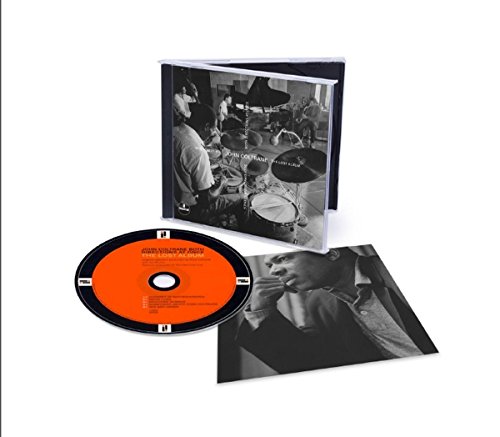
John Coltrane
Both Directions at Once: The Lost Album
Release Date: Jun 29, 2018
Genre(s): Jazz, Jazz Instrument, Avant-Garde Jazz, Modal Music, Saxophone Jazz
Record label: Verve
Music Critic Score
How the Music Critic Score works
Buy Both Directions at Once: The Lost Album from Amazon
Album Review: Both Directions at Once: The Lost Album by John Coltrane
Exceptionally Good, Based on 4 Critics
Based on rating 9/10
Towards the end of last year's Chasing Trane, John Scheinfeld's comprehensive and affectionate documentary about the life and work of John Coltrane, it was a surprising voice who offered up perhaps the most accurate frame of reference for the legendary saxophonist's career trajectory. 'If you go to any kind of retrospective of Picasso's art, it's breathtaking what he did, going from being a very good traditional painter to the Blue Period, his abstract and then his cubist work,' says Bill Clinton, one of the few figures to be interviewed for the film who wasn't a relative or a fellow musician. "If you think about what John Coltrane did, moving through his various phases of musical creativity, he basically did everything Picasso did in about 50 years' less time.
Based on rating 4.5/5
Any newly discovered music from a legend on the order of John Coltrane is an event. But the reason advance buzz has been particularly feverish for Both Directions at Once: The Lost Album, a previously unissued session from March of 1963, is that it comes from the era of his so-called Classic Quartet. Simply put, the group – featuring pianist McCoy Tyner, bassist Jimmy Garrison and drummer Elvin Jones – was Coltrane's greatest band, a unit perfectly poised between hard-edged swing and gravity-defying exploration.
Based on rating 8.6/10
From April 1962 to September 1965, while under contract to the record label Impulse!, John Coltrane led a more or less consistent working group with the same four musicians. After his death in 1967, this group--Coltrane on tenor and soprano saxophone, McCoy Tyner on piano, Jimmy Garrison on bass, Elvin Jones on drums--became known as Coltrane's "classic quartet." The group was powerful, elegant, and scarily deep. It was also a well-proportioned framing device.
Based on rating 8/10
Years of canonization have obscured how John Coltrane was at a bit of crossroads in the early '60s, playing increasingly adventurous music on-stage while acquiescing to Impulse!'s desire to record marketable albums. Whenever he could, producer Bob Thiele would capture Coltrane working out new music with pianist McCoy Tyner, drummer Elvin Jones, and bassist Jimmy Garrison. One of these sessions happened at Rudy Van Gelder's New Jersey studio on March 6, 1963, when Coltrane's quartet was in the thick of a residency at New York's Birdland and just before they were scheduled to cut an album with vocalist Johnny Hartman.
'Both Directions at Once: The Lost Album'
is available now

